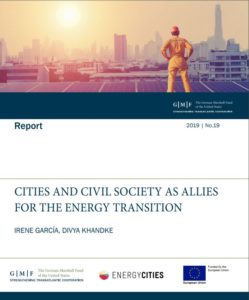Transatlantic multi-stakeholder dialogue for the local energy transition
Over the years, the city has made a name for itself as an environmental protection and sustainable development capital thanks to its wide-ranging network of partners. Heidelberg was the first German city to develop a climate protection concept in 1992. The initial climate protection concept and the energy concept were reviewed in 2004 and again in 2010.
Between 1987 and 2011, Heidelberg reduced CO2 emissions of its municipal buildings by 58 percent and decreased final energy consumption by 68 percent. The municipality has worked in close cooperation with schools through various projects to include energy education in the curriculum and with SMEs to implement an environmental management system. The municipality considers communication as a means of raising citizens’ awareness and has developed an innovative communication strategy. Through participation in regional, national, and international projects Heidelberg benefitted from additional funding that has helped to raise further interest among stakeholders.In 1996, the municipality became a member of European local authority networks such as Energy Cities and joined the Covenant of Mayors in 2008 as one of the first cities.
In 2012, Heidelberg became a model municipality for “Masterplan 100% Klimaschutz”, a climate-neutral-city program led by the Federal Ministry of the Environment, with the following targets: reduce CO2 emissions by 95 percent and cut energy use in half by 2050. In four years, the city has seen a 10 percent rise in renewable electricity and a 20 percent increase in heat from renewables.
Governmental competencies
German local governments have both compulsory and voluntary competences. These local governments are bound to compulsory tasks related to the energy transition by the national level that covers energy and water supply, urban land use planning, sewerage disposal, waste disposal, disaster control, and school management. The voluntary competences the city can employ to drive the energy transition are the management of road transport infrastructure and public transport.
Through the city-owned energy utility and building stock, the municipality can have ambitious energy management goals. Policy measures can help guide other players in the city or metropolitan area toward sustainable action and discourage unsustainable practices.


